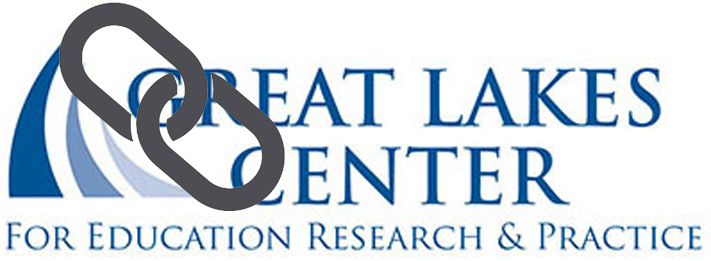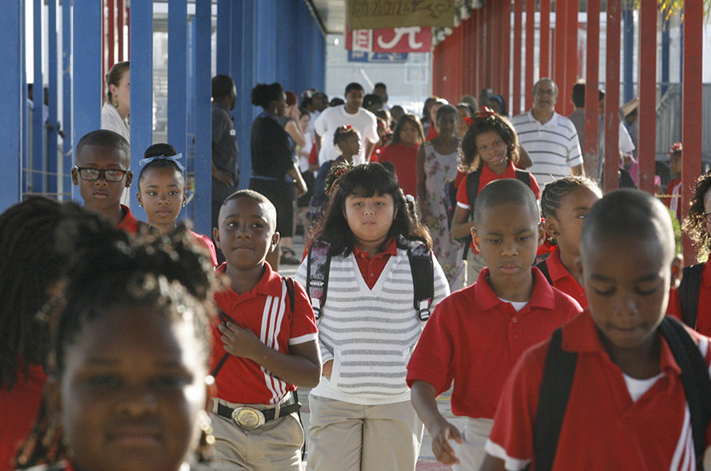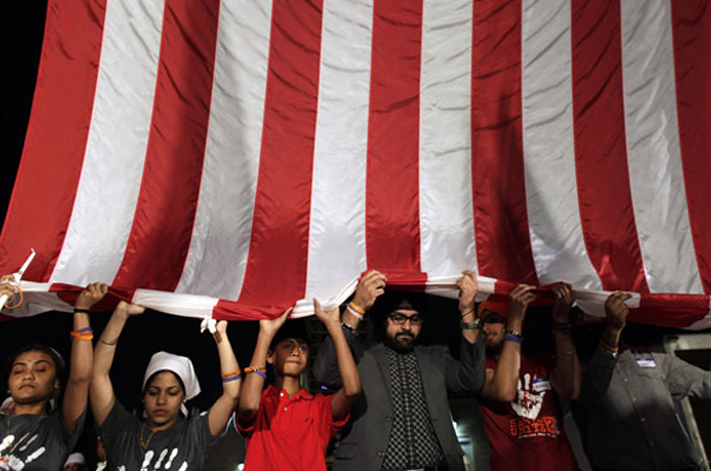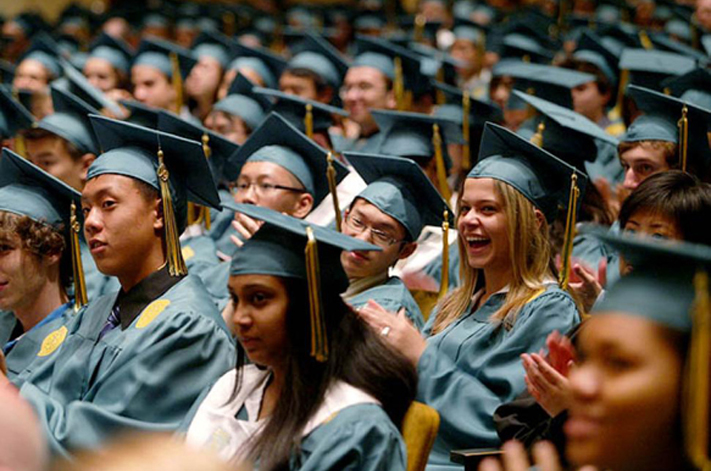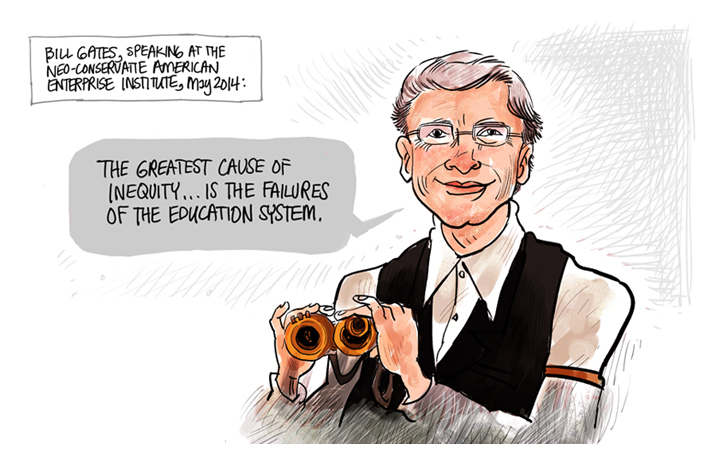Project Description
By Alex Molnar, Gary Miron, Luis Huerta, Jennifer King Rice, Larry Cuban, Brian Horvitz, Charisse Gulosino, Sheryl Rankin Shafer | Originally Published at >The National Education Policy Center May 2, 2013
Press Release:
Abstract: This national study, which comprehensively reviews 311 virtual schools operating in the United States, finds serious and systemic problems with the nation’s full-time cyber schools. Despite virtual schools’ track record of students falling behind their peers academically or dropping-out at higher rates, states and districts continue to expand virtual schools and online offerings to students, at high cost to taxpayers.
The advocates of full-time virtual schools are several years ahead of policymakers and researchers, and new opportunities are being developed and promoted largely by for-profit entities accountable to stockholders rather than to any public constituency. The report’s authors conclude that continued rapid expansion of full-time cyber schools is unwise. More research is needed; and to enable such research, state oversight agencies need to require more, and better refined, data. Financial controls and funding unique to cyber schools need to be established.
Click to access downloadable and/or printable files. The first is the complete brief (including all sections and appendices). Below it are the individual sections, each of which may be downloaded separately.
Reference Publication:
Virtual Schools in the U.S. 2013: Politics, Performance, Policy, and Research Evidence
National Education Policy Center Study Tracks the Performance of 311 Full-Time
Virtual Schools, Finds Lagging Academic Performance, High Dropout Rates,
Limited Oversight, and Excessive Costs that Drain Millions from Public Coffers
Contact:
Jamie Horwitz, 202/549-4921
jhdcpr@starpower.net
Alex Molnar, 480/797-7261; nepc.molnar@gmail.com
URL for this press release: http://tinyurl.com/bpoxwmd
Boulder, Colo. (May 2, 2013) — A national study, released today by the National Education Policy Center (NEPC), offers a comprehensive review of 311 virtual schools operating in the United States. It finds serious and systemic problems with the nation’s full-time cyber schools.
University of Colorado, Boulder Professor Alex Molnar, who edited Virtual Schools in the U.S. 2013: Politics, Performance, Policy, and Research Evidence, summed it up this way: “Even a cursory review of virtual schooling in the U.S. reveals an environment much like the legendary wild west. There are outsized claims, lagging performance, intense conflicts, lots of taxpayer money at stake, and very little solid evidence to justify the rapid expansion of virtual schools.”
Lagging Performance – Soaring Enrollment
On the publicly available metrics of Adequate Yearly Progress (AYP), virtual schools lag significantly behind traditional brick-and-mortar schools.
AYP provides an indication of a school’s academic and non-academic performance (school attendance, the percentage of students taking a state exam, etc.). In the 2010-2011 school year, 52 percent of brick-and-mortar district and charter schools met AYP, contrasted with 23.6 percent of virtual schools – a 28 percentage-point gap. Virtual schools also enroll a far smaller percentage of low-income students, special education students, and English language learners than brick-and-mortar public schools.
“When virtual schools were first coming on the scene, the results looked better,” said Western Michigan University Professor Gary Miron. “It now appears that early adopters of the virtual school model were largely home-schoolers who were used to studying alone and who generally had lots of parental guidance. As virtual schools have expanded, it appears that their performance has slipped dramatically.”
Currently virtual schools enroll more than 200,000 elementary and secondary students in 39 states and the District of Columbia. McLean, Virginia-based K12 Inc. is by far the largest private operator in this sector. In 2011-12, K12 Inc. alone operated 58 full-time virtual schools, enrolling close to 77,000 students. By comparison, the Pearson-owned Connections Academies is second, with 21 schools and more than 27,000 students in the 2010-2011 school year.
Expansion Driven by Lobbying and Advertising Rather than Student Success
Despite virtual schools’ track record of students falling behind their peers academically or dropping-out at higher rates, states and districts continue to expand virtual schools and online offerings to students. Between 2008 and 2012, 157 bills that the National Council of State Legislatures categorizes as related to “distance/online/virtual/learning” became law in 39 states, territories, and the District of Columbia.
Publicly-funded virtual school expansion appears to be driven by lobbying and advertising dollars. It is not justified by the research evidence, nor is it governed by thoughtful policy.
Data obtained from Kantar Media, and first reported by USA Today, shows that the 10 largest online school providers spent approximately $100 million in the past five years on advertising — money that came from public school funds.
Columbia University Professor Luis Huerta, another of the report’s authors, noted that, “In the past two years a number of states, including Wisconsin, Oregon, Louisiana, and Michigan, either raised or eliminated enrollment caps for full-time virtual schools.” Co-author Jennifer King Rice, a University of Maryland Professor, points out that at the same time, ”None of those states passed legislation strengthening accountability and oversight.”
High Cost to Taxpayers
The overall cost to taxpayers for lackluster virtual schools has been significant. Ohio provides a good example; the Cleveland Plain Dealer reported that online school enrollment in Ohio topped 30,000 students and that online providers were paid $209 million in public money for the 2010-11 year, but failed to provide a detailed accounting of their expenses to the state.
Ohio pays online charter school operators $6,300 per student; however, according to an investigation by State Impact Ohio, the cost of running these programs is approximately $3,600 per student. High dropout rates might mean that the cost to the provider is even less.
Nevertheless, in Ohio and most other states, virtual school operators receive the same allocation as charter schools that pay for buildings, desks, textbooks, and other costs associated with more traditional school settings.
Although virtual technology offers exciting possibilities and some models like blended learning — where online instruction is mixed with more traditional classrooms — may hold promise, the consistently poor performance of full-time virtual schools makes it imperative to know more about these schools. The advocates of full-time virtual schools are several years ahead of policymakers and researchers, and new opportunities are being developed and promoted largely by for-profit entities accountable to stockholders rather than to any public constituency.
Stanford University Professor Emeritus Larry Cuban, who contributed a review of current research knowledge on virtual education to the NEPC report and has long followed education technology issues, explained, “The current climate of elementary and secondary school reform that promotes uncritical acceptance of any and all virtual education innovations is not supported by educational research. A model that is built around churn is not sustainable; the unchecked growth of virtual schools is essentially an education tech bubble.”
Recommendations
The authors of the NEPC report conclude that continued rapid expansion of full-time cyber schools is unwise. More research is needed, and to enable such research, state oversight agencies need to require more, and better refined, data. Financial controls and funding unique to cyber schools need to be established.
The NEPC report Virtual Schools in the U.S. 2013: Politics, Performance, Policy, and Research can be found on the web at http://nepc.colorado.edu/publication/virtual-schools-annual-2013.
Along with Professors Molnar, Miron, Huerta, King Rice, and Cuban, contributors to this study included professors Sheryl Shafer of Teachers College – Columbia University, Brian Horvitz of Western Michigan University, and Charisse Gulosino at the University of Memphis.
The mission of the National Education Policy Center is to produce and disseminate high-quality, peer-reviewed research to inform education policy discussions. We are guided by the belief that the democratic governance of public education is strengthened when policies are based on sound evidence. For more information on NEPC, please visit http://nepc.colorado.edu/9
This research brief is made possible in part by the support of the Great Lakes Center for Education Research and Practice (GLC). For more information about GLC, visit http://www.greatlakescenter.org/.
Nepc Virtual 2013 by National Education Policy Center
Nepc Virtual 2013 Exec Sum by National Education Policy Center
Nepc Virtual 2013 Intro 0 by National Education Policy Center
Nepc Virtual 2013 Section 1 2 by National Education Policy Center
Nepc Virtual 2013 Section 2 0 by National Education Policy Center
Nepc Virtual 2013 Section 3 by National Education Policy Center
Nepc Virtual 2013 Appendix a Ncsl Search 2008 2012 by National Education Policy Center
Section 1 Appendices B-d Final 0 by National Education Policy Center
